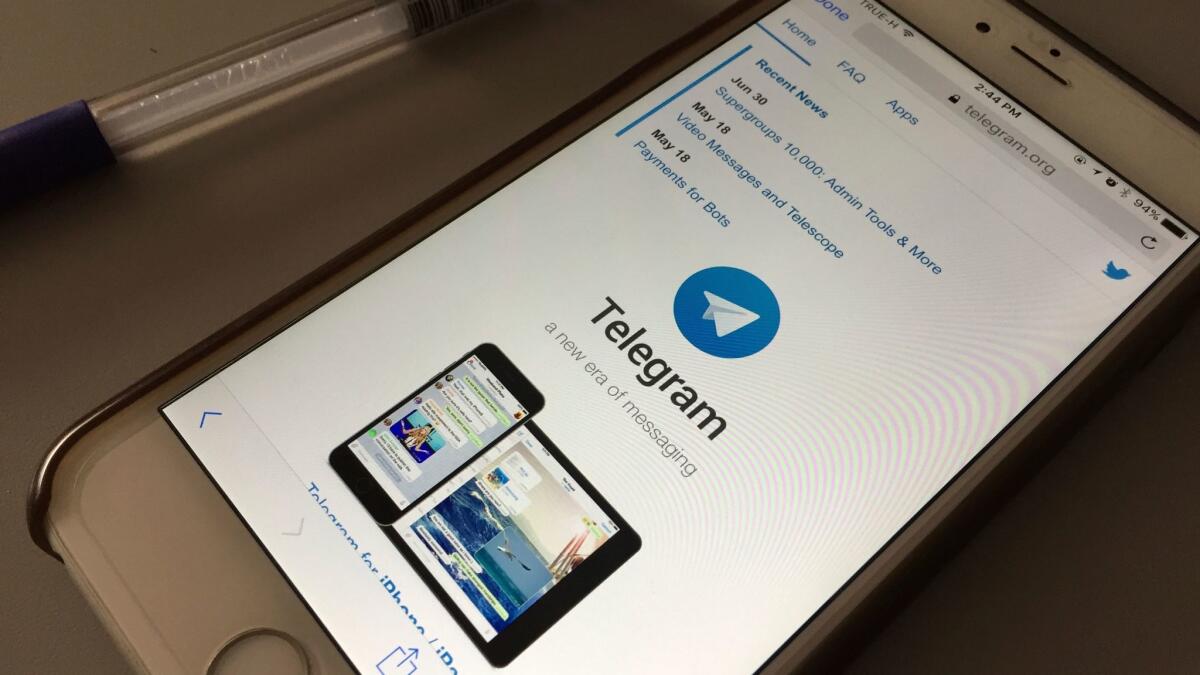Iran tried to block the internet to disrupt protests. It wound up disrupting daily life

- Share via
When Iranian authorities cracked down on the internet this month in an attempt to suppress unrest, tech entrepreneur Milad Nouri did what he has grown accustomed to doing: He found a way around the censors.
Like other Iranians dependent on the web, Nouri was at first set back when the Supreme National Security Council restricted access to social media applications and servers commonly used to bypass Iran’s cloistered internet.
“We weren’t able to communicate to our users and we lost payments,” Nouri said.
It took the 32-year-old three days to find a different server to host his mobile app design company, which employs 15 people, allowing him to again evade government censors and get his business back up and running.
As authorities have tried to govern the internet, Iranians have over the years become adept at circumventing online censorship. But as more Iranians use the internet — and the internet plays a bigger role in an increasingly web-connected society — crackdowns have broader effects. For many, internet restrictions in recent weeks disrupted daily life more than the protests did.
On Dec. 28, protests began in the northeastern city of Mashhad among working-class Iranians frustrated with high unemployment and economic inequality. The demonstrations, now in their second week, are Iran’s biggest since the disputed 2009 presidential election sparked weeks of protest known as the Green Movement. At least 21 have died in clashes with authorities.
As the latest protests spread, authorities banned use of Telegram and Instagram, which had been used to mobilize demonstrations. At one point, authorities completely cut off internet access for 30 minutes, according to security experts.
Such crackdowns have been a familiar tactic in Iran since 2009, when authorities blocked access to Twitter and Facebook in an attempt to quash the Green Movement. But those efforts led tech-savvy protesters toward digital tricks that can evade censorship, kicking off an ongoing game of technological cat and mouse.
In this crackdown, the government appears to have the upper hand.
“It’s really hard to get around it,” said Amir Rashidi, an internet security researcher at the New York-based Center for Human Rights in Iran. “Almost all of the circumvention tools are blocked and the Iranian government is doing whatever they can do to block it.”
“It wasn’t this bad in 2009,” he said. “I’m not able to talk to my family on some days over the internet.”
Collin Anderson, an independent researcher on internet policy, said economic sanctions have left Silicon Valley companies cautious about doing business in Iran, let alone fighting back against government censorship there.
“There is a lost opportunity for enabling a free flow of information in Iran because tech companies have made overly conservative decisions with how they will comply with U.S. sanctions,” Anderson said.
That has left Iranians who rely on U.S. tech companies with little recourse.
The crackdown has made it harder to navigate Tehran, the nation’s capital and its biggest city. Like many young Iranians, journalist Maryam Mazrooei uses the local ride-hailing app Snapp to get around. But because Snapp’s drivers calculate the fastest route using Google — one of many foreign services affected by the crackdown — drivers and customers experienced delays and struggled to locate each other.
“I was north of Tehran and trying to get a taxi to go to the center of the city but I couldn’t. I didn’t expect the sudden disturbance,” Mazrooei said.
Researchers said the crackdown also put out of work thousands who operate informal shops selling homemade food or clothing through their Telegram and Instagram accounts.
One Telegram channel named “Iran’s Shoe Shop” has more than 40,000 subscribers. The business owner, identified only as Behnam, used his profile picture to try to send a message to Iranian authorities: “I work on Telegram. Don’t block it.”
Communications Minister Mohammad-Javad Azari Jahromi acknowledged the financial hardships, according to the semiofficial Iranian Students News Agency. “I apologize to those businesses and for those who have been financially affected,” Jahromi said Jan. 2. “When peace returns, those [restrictions] will be lifted.”
Access to Instagram was restored Friday, though Telegram remains offline.
Researcher Farhad Souzanchi said that the government’s decision to block social messaging apps now has a greater effect on society than it did when the government imposed restrictions during the Green Movement.
“In 2009, censorship was just picking up in Iran and censorship for the most part was targeting … specific content,” Souzanchi said. “But now it’s become much more institutionalized.”
In part, that’s because more Iranians are online — the country of 80 million now has 20 million smartphone users, and it’s no longer just the educated elite who have access to the internet.
But as internet usage has grown, so too has familiarity with circumvention tools.
Ali Abdi, a 30-year-old Iranian activist and doctoral student at Yale University, depends heavily on Telegram to stay in touch with his mother in Iran. Abdi, who has been living in Afghanistan conducting research for his PhD, said Iranians have banded together to help older generations learn to bypass the government’s censorship.
“I was surprised to see my mom use Telegram to message me ‘good morning,’” he said. “She was able to find people to help her. This is not having the effect that that authorities want.”
Follow me on Twitter @melissaetehad
More to Read
Sign up for Essential California
The most important California stories and recommendations in your inbox every morning.
You may occasionally receive promotional content from the Los Angeles Times.











